


|
 |
|
|
#1 |
|
Registered Member
 Join Date: Jan 2008
Location: La Crescenta, CA
Posts: 596
|
Helpful Method to Identify Dinoflagellates
There have been dozens (probably hundreds) of posts from people trying to identify dinoflagellates in their aquarium. I have posted this in other threads but figured it might be helpful to start a thread explaining this method.
Dinoflagellates are single-celled organisms that aggregate to form visible colonies on surfaces in our aquariums. They are typically described as a brown slime algae. Correct identification of dinoflagellates is important since different algal blooms have specific treatments that are most effective depending on which type of bloom you're dealing with. Many posters have suggested that microscopic identification is necessary but this is obviously not reasonable for most of us. I accidentally stumbled on this phenomenon of dinoflagellates many years ago while siphoning dinos from my tank through a filter sock into a bucket. The water was essentially clear in the bucket but after sitting in the bucket outside I noticed brown slime algae "growing" in the bucket. After stirring the bucket water vigorously the algae disappeared completely only to reappear a little while later. To identify dinoflagellates you'll need to siphon some algae into a container preferably with a lid or cap. After filling up the container shake the water up vigorously to break up the algae. Then filter the water through a paper towel or filter sock, the water should be rather clear. Leave the water exposed to ambient light in this container for 30-120 minutes. In my experience dinoflagellate algae will be the only type that aggregates back together quickly in the container. Here's the sample water after filtering through a paper towel  And here's the same water after about an hour 
|
|
|

|
|
|
#2 |
|
RC Mod
 Join Date: Mar 2002
Location: Mountain View, CA, USA
Posts: 88,616
|
That's an interesting idea.

__________________
Jonathan Bertoni |
|
|

|
|
|
#3 |
|
Registered Member
Join Date: Nov 2008
Location: sweden
Posts: 35
|
it is easy for an experienced aquarist to "Clinical" set the correct diagnosis. in doubt the microscope will tell you. I often in the beginning used my microscope but now i can recognize dino from 100 km away;-)...
|
|
|

|
|
|
#4 |
|
Registered Member
Join Date: Nov 2008
Location: sweden
Posts: 35
|
but you diagnostic idea is very interesting:-)!...i will test it...i have no dinos myself anymore, thanks god, but i will find some;-)
i Think this fenomena is due to the dinos enormous Phototaxi /JR |
|
|

|
|
|
#5 |
|
Registered Member
Join Date: Jan 2004
Posts: 368
|
sonnus, very cool experiment. If you do this will the paper towel filter out cyano to help people ID Dino vs Cyano?
|
|
|

|
|
|
#6 | |
|
Registered Member
 Join Date: Jan 2008
Location: La Crescenta, CA
Posts: 596
|
Quote:
In my experience, this is a good way to distinguish between the different brown algae. There are a lot of variables so these methods might not be fool proof but they have been very reliable for me. Dinoflagellates will disperse in the container completely after being shaken and will pass through the filter almost completely with only detritus remaining in the filter. Once the filtered water has been left sitting in ambient light for about an hour they will organize back together into their typical slimy appearance. Dinos seem to be the most neutrally buoyant of the three. Cyanobacteria will typically stay matted together even after shaking the capped container vigorously with lots of small bits resembling torn paper. Most of the algae will be caught in the filter with the detritus but the filtered water will still be discolored. The algae will not organize back into colonies after an hour. The water tends to stay brown but sometimes the cyano settles on the bottom of the container. Cyano seems to be close to neutrally buoyant most of the time. Diatoms will disperse much more than cyano when shaken vigorously into a brownish tint but sometimes tiny bits stay together like the cyano. Much more of the diatoms will pass the filter compared to the cyano. The diatoms will not reorganize after the filter and they tend to be more negatively buoyant than the cyano or dinos so they settle on the bottom of the container faster. I think all of these algae can change their buoyancy so this might vary but the diatoms are constantly less buoyant than the others. |
|
|
|

|
|
|
#7 |
|
Registered Member
Join Date: Apr 2015
Posts: 355
|
I'm going to test this theory when I get home. I am very interested to see....
__________________
Current tank info: 30gal sumpless 120gal with 40gal sump 90gal freshwater - 2 angel, blood parrot, 3 mystery snails, pleco, and a school of rasbora's |
|
|

|
|
|
#8 |
|
Registered Member
 Join Date: Jan 2008
Location: La Crescenta, CA
Posts: 596
|
|
|
|

|
|
|
#9 |
|
Registered Member
Join Date: Jan 2015
Location: Canada
Posts: 390
|
Hm! First attempt and no coagulation (ok, chemotaxis or whatever) of dinos in the jar. I know I have Ostreopsis and at least 1 other very small un-identified dino. Possibly the paper towel? I will try again with the lights off, might get a better response.
ivy (they did coalesce in the bucket when I was still doing water changes through a filter sock)
__________________
28g cube, CF 105watts! Tunze 9001. Tiny frags: Euphyllia, blasto, ricordea and a rock flower anemone. Lost fish and inverts due to ongoing outbreak of dinoflagellates. Current Tank Info: 28g aio, 105 watt CF lights, no sump or skimmer. 2 sexy shrimp, tiny frogspawn, tiny toadstool, tiny lps. Started Feb '15 |
|
|

|
|
|
#10 |
|
Registered Member
Join Date: Apr 2015
Posts: 355
|
2:15 pm
 4:15 pm 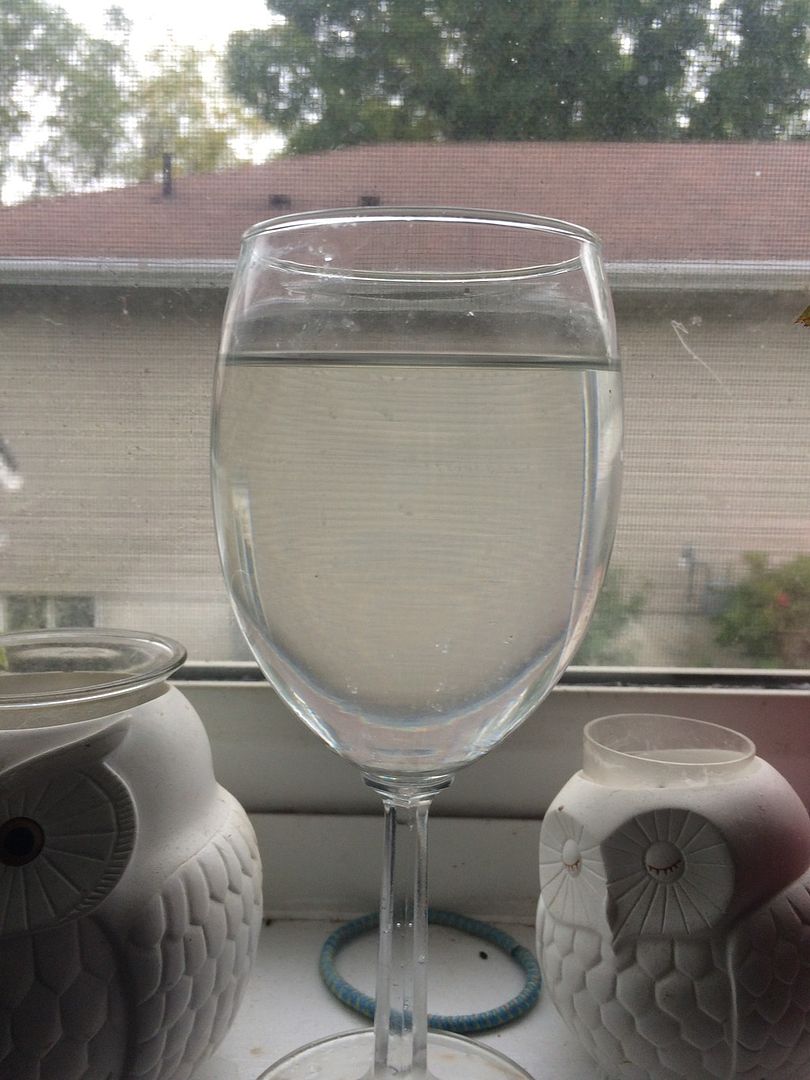 Conclusion: cyano does not pass/re organize in the cup. Interesting. Anyone else try?
__________________
Current tank info: 30gal sumpless 120gal with 40gal sump 90gal freshwater - 2 angel, blood parrot, 3 mystery snails, pleco, and a school of rasbora's |
|
|

|
|
|
#11 |
|
Registered Member
 Join Date: Jan 2008
Location: La Crescenta, CA
Posts: 596
|
It's important to get a pretty dense population of the dinos in the sample water. I usually siphon dinos directly off the rocks or sand into a 1.5L water bottle with a 3/8" tube. It doesn't matter if you get sand or detritus in the sample, just try to get as many dinos as possible.
Also, it's very important to shake the bejesus out of the sample before filtering it. This ensures that the dinos are separated into small enough sizes to fit through the filter. Lastly, the filtered sample might need to be lightly stirred to help the dinos come into contact with one another. If you don't notice any aggregation after 2 hours give the sample water more time. Set it up on a shelf somewhere so nobody mistakes it for their water! I've left these samples in ambient light over night and when I check them out the next morning there are nice colonies formed. |
|
|

|
|
|
#12 |
|
Seasoned reefer
Join Date: Jan 2007
Location: In Quebec, Canada
Posts: 3,653
|
Now how to kill them?
__________________
Temp 80F, PH 8.5-8.0, Alk 6.8-7.2, Ca 430, Mg 1700, NO3 0-0.25, PO4 0.04, 34.4 PPT Lights @ 100% all others, 35% White Current Tank Info: 60g Cube, 120lbs live rocks, Hydra52 2x120W, 2 MP40+ 1 MP10 @ 70%, Phosban 550 GFO+Carbon, 200W Heater, SWC Skimmer, Kalk ATO, 150 gpd RODI |
|
|

|
|
|
#13 |
|
Registered Member
 Join Date: Jan 2008
Location: La Crescenta, CA
Posts: 596
|
Well, I know there are a dozen ways to treat dinos and all seem to have mixed results for different people. I personally have been very successful with raising the pH, this typically causes the dinos to almost completely disappear after 2-3 days and you do not need to turn off the lights. I have done this on dozens of tanks and it has worked every time. Having an Apex to control the pH is very helpful but not necessary.
I use kalkwasser to raise the pH and I've never experienced any losses in FOWLR or full-blown reef tanks. Of course there is risk whenever you dose kalkwasser and this is no different. Day 1: Add about 1.0 teaspoon of kalk per gallon of RODI top off water. This will typically bump up the pH about 0.1-0.3 after 24 hours. Day 2: After 24 hours your pH will hopefully be around 8.1-8.4. If your pH is not 8.5 then increase the saturation to 1.5 teaspoons per gallon of RODI top off water. This will typically bump up the pH another 0.1-0.3 after 24 hours. Day 3: After 48 hours your pH will hopefully be around 8.2-8.5. If your pH is not 8.5 then increase the saturation to 2.0 teaspoons per gallon of RODI top off water. This will typically bump up the pH another 0.1-0.3 after 24 hours. Day 4: After 72 hours your pH will hopefully be around 8.3-8.6. If your pH is not 8.5 then increase the saturation to 2.5 teaspoons per gallon of RODI top off water. Now the kalk water is supersaturated so you will either need to manually shake it every hour or add a powerhead to the top water to keep the kalk suspended in the solution. Day 5: If your pH isn't up to 8.5 yet then you will need to increase the saturation to 3.0 teaspoons per gallon of RODI top off water. You will either need to manually shake it every hour or add a powerhead to the kalk water to keep the kalk suspended in the solution. This is a much slower method than I personally use. I typically raise the pH up to 8.6 within 2 days and once the pH reaches 8.6 the dinos are usually gone. Sometimes the pH needs to go higher. Notes:
This is the Apex code I use for my Kalk doser. I usually use a Tom's Aqua Lifter for a dosing pump. If you have an electric float switch in your sump you can also tell the pump not to dose if the sump is full. Fallback OFF OSC 000:00/000:30/004:30 Then ON If pH > 8.20 Then OFF Of course you will need to increase the pH limit 0.1 about every 12 hours. |
|
|

|
|
|
#14 |
|
Registered Member
Join Date: Aug 2015
Posts: 40
|
I have an ID question. My 55 gal has gone through a lot over the last couple years. Of course it has no animals or corals in it now. I have been waiting patiently for months just waiting for everything to be just perfect. I have had what I had were Dino's. I work in a hospital and I am lucky enough to have access to some pretty good equipment. Two days ago I had the opportunity to look at a sample under a microscope and it doesn't look anything like dinos. I have been all over the net looking for a picture of what I saw. It looked almost like a nest of rebar. Individual pieces looked kind of like braided rope. Any idea what this might be? They almost seemed to glow a little bit. I wish I could have taken a picture of it. It was fascinating to say the least. I looked at it at 40X magnification.
|
|
|

|
|
|
#15 | |
|
Registered Member
 Join Date: Jan 2008
Location: La Crescenta, CA
Posts: 596
|
Quote:
Here's some photos http://westerndiatoms.colorado.edu/a...at_are_diatoms Here's a random google photo: 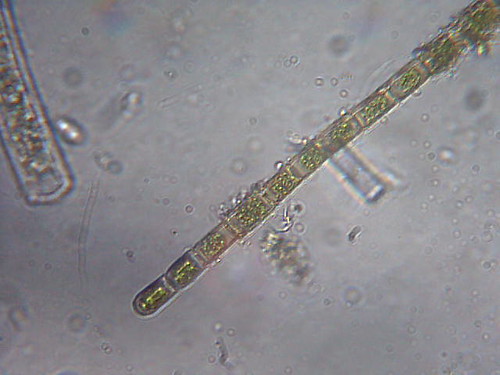
|
|
|
|

|
|
|
#16 |
|
Registered Member
Join Date: Aug 2015
Posts: 40
|
Nope, it was strange. It wasn't really segmented like that. I wish I could find a picture. I have been looking but I haven't been able to find one yet.
|
|
|

|
|
|
#17 |
|
Registered Member
Join Date: Aug 2015
Posts: 40
|
I have had my lights out for about a week now and it seems to keep it at bay. I'll take a picture when I get home but the tank really doesn't look too bad right now. I even thought about leaving the lights on for a few days just to get a more positive ID on it. It is brownish black and it blankets everything. Rocks, sand, over and undersides of the rocks. I have a tooth brush and a hob freshwater filter that I use to keep it under control.
|
|
|

|
|
|
#18 |
|
Registered Member
 Join Date: Jan 2008
Location: La Crescenta, CA
Posts: 596
|
|
|
|

|
|
|
#19 |
|
Registered Member
 Join Date: Jan 2008
Location: La Crescenta, CA
Posts: 596
|
I tested this method again with some brown cyano so I could get a few pictures.
It's very important to strain the cyano through a filter, if you don't filter the water you won't have these same results. Here's the cyano after filtering through a paper towel. I would say 95% of the cyanobacteria is stuck in the filter but there is definitely some cyano that passes the filter since the water is tinted slightly brown. 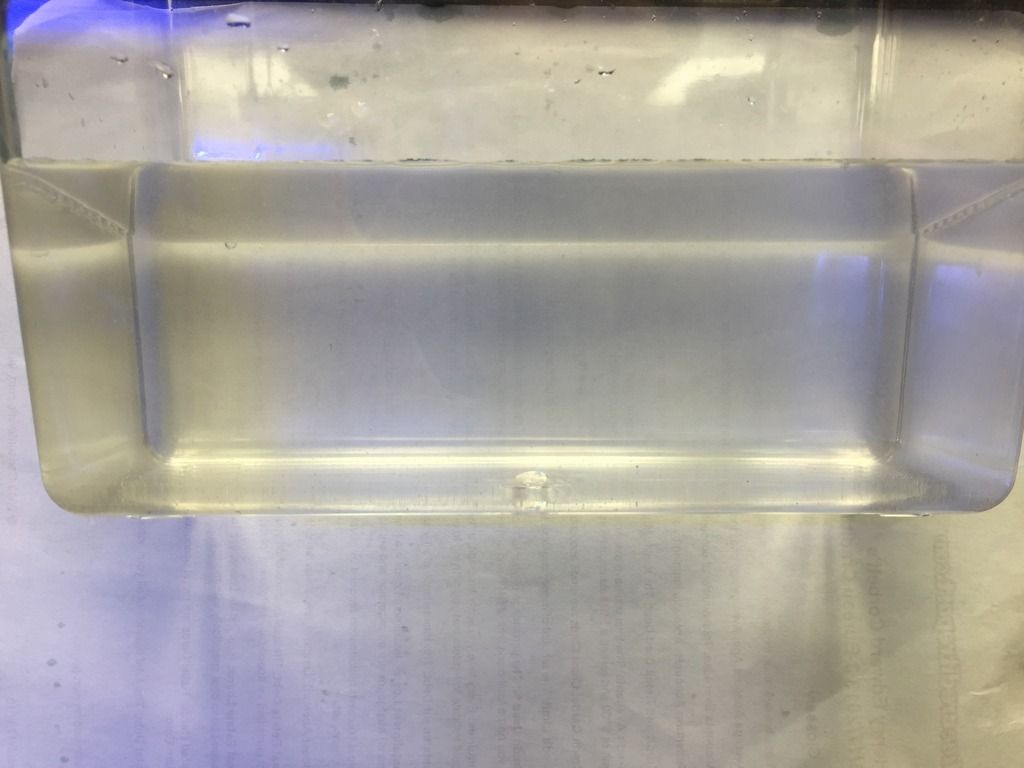 And here is the water after sitting for about 4 hours, there is a little bit settled at the bottom but no sign of any re-aggregation of the cyano like seen with the dinos. 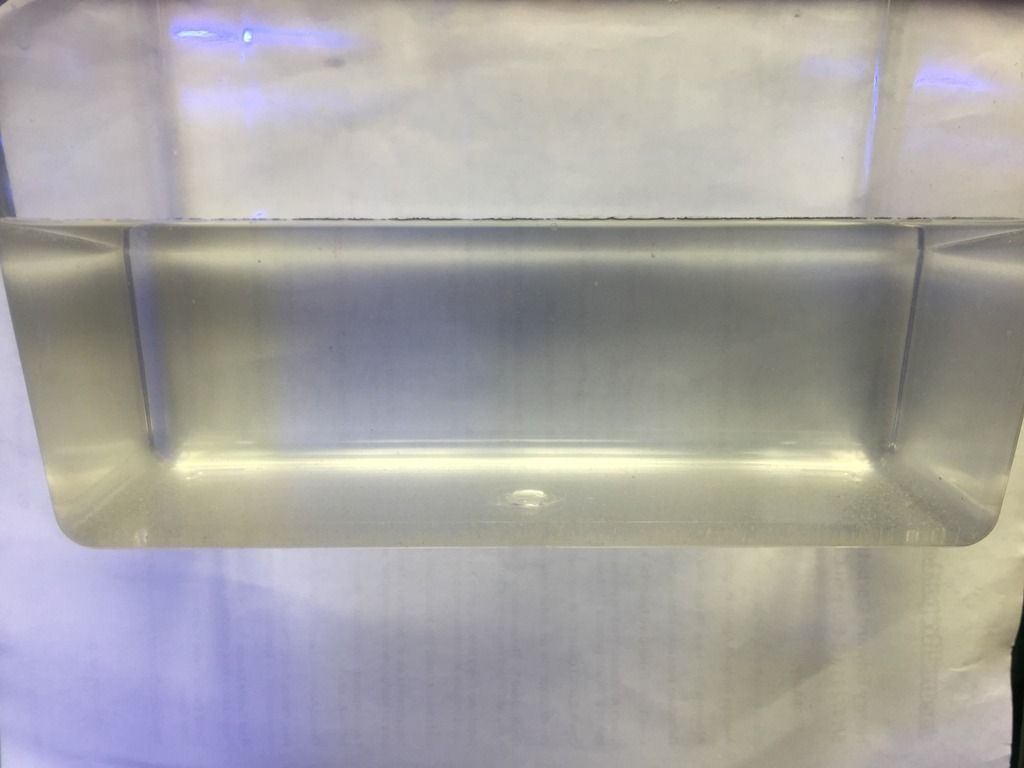
|
|
|

|
|
|
#20 |
|
Registered Member
 Join Date: Jan 2008
Location: La Crescenta, CA
Posts: 596
|
Dp.
Last edited by sonnus; 10/08/2015 at 08:30 PM. |
|
|

|
|
|
#21 |
|
Registered Member
Join Date: Aug 2015
Posts: 192
|
I've got dinos in my tank. Just started showing up today. I am going fallow for 72 days due to an ich outbreak. Will the kalk method work for me?
My tank is only 6.5 weeks old, and has no corals. There are several snails, and a clownfish. The clown is getting a freshwater dip and then moved to my quarantine tank. |
|
|

|
|
|
#22 |
|
Registered Member
Join Date: Apr 2015
Posts: 355
|
__________________
Current tank info: 30gal sumpless 120gal with 40gal sump 90gal freshwater - 2 angel, blood parrot, 3 mystery snails, pleco, and a school of rasbora's |
|
|

|
|
|
#23 | |
|
Registered Member
Join Date: Apr 2015
Posts: 355
|
Quote:
__________________
Current tank info: 30gal sumpless 120gal with 40gal sump 90gal freshwater - 2 angel, blood parrot, 3 mystery snails, pleco, and a school of rasbora's |
|
|
|

|
|
|
#24 | |
|
Registered Member
Join Date: Aug 2015
Posts: 192
|
Quote:
are dinos part of the natural cycle, and if so, will they phase themselves out like the diatoms did? 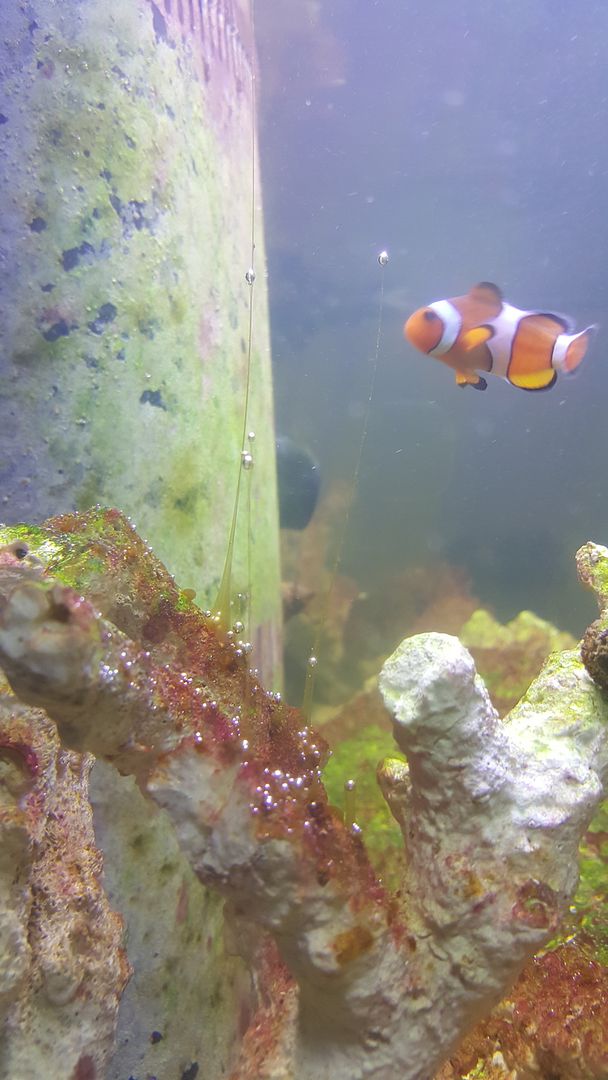 
|
|
|
|

|
|
|
#25 |
|
Registered Member
Join Date: Apr 2015
Posts: 355
|
No and no... Kind of.
It's been concluded Dino's exist in all home aquaria, it's just a matter of what strain and at what magnitude. They can be a headache to get rid of. Looking at your photos I'm not sold on the fact it's Dino's. Could be, but I'm putting my money on calothrix. Like I posted in your other thread, get an ID. Then your one step ahead.
__________________
Current tank info: 30gal sumpless 120gal with 40gal sump 90gal freshwater - 2 angel, blood parrot, 3 mystery snails, pleco, and a school of rasbora's |
|
|

|
 |
| Thread Tools | |
|
|